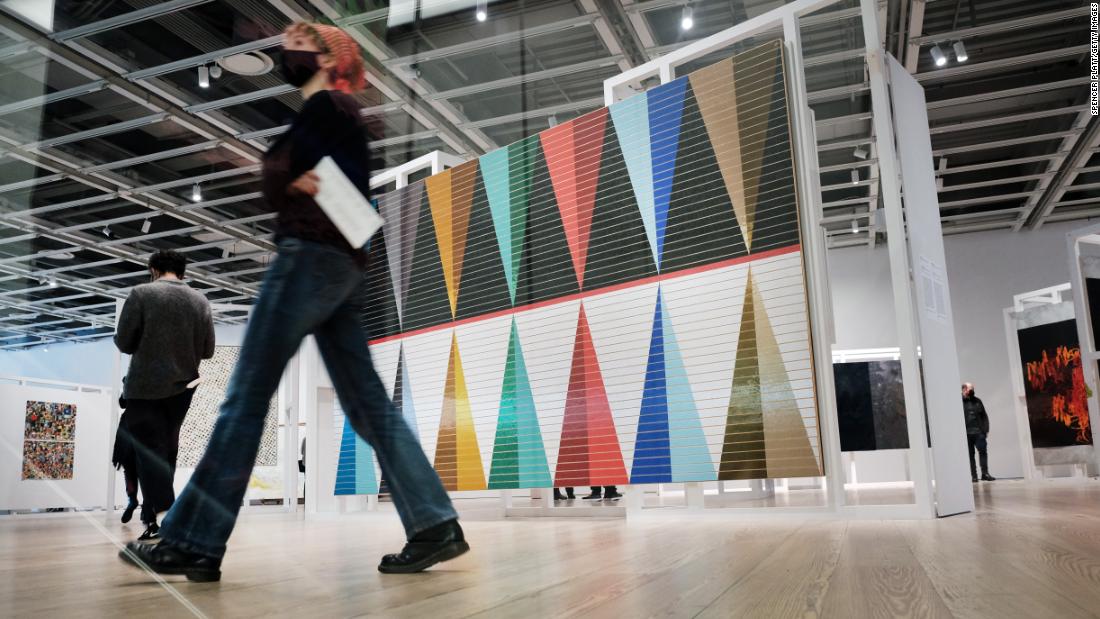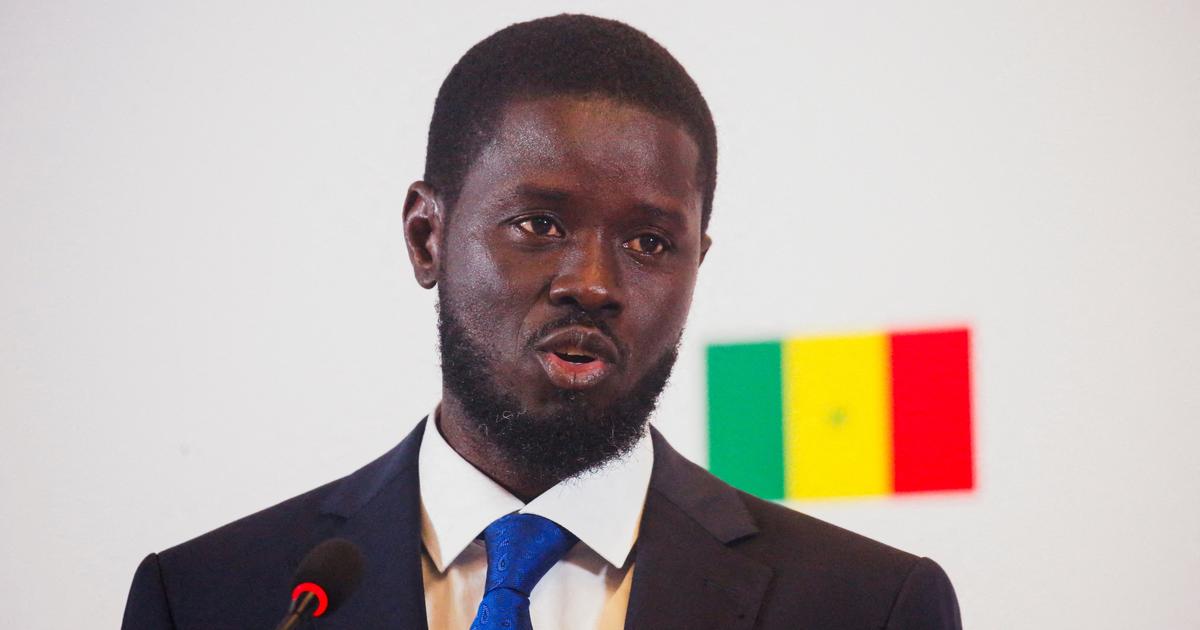What distinguishes the covid-19 BA.2 subvariant from the omicron?
0:54
(CNN) --
Cases in the northeastern United States are on the rise driven by the BA.2 subvariant.
As the country navigates the third year of the COVID-19 pandemic, Philadelphia has reintroduced the requirement to wear masks indoors and some colleges are requiring masks to be worn during the last days of the spring semester.
The American population will not face a lockdown like the one that is taking place in Shanghai, where residences are not allowed to leave, covid tests are mandatory and food supplies are running low.
Most Americans are unlikely to face even moderate pandemic restrictions from local governments.
So this leaves in the hands of each one the possibility of protecting themselves.
PHOTOS |
This is what the confinement in Shanghai looks like due to a new outbreak of covid-19
After three years, most people know how to do it: vaccinations, masks, distancing, hand washing and, let's not forget, ventilation.
But as we move into offices, schools and public spaces, there are some things we can control, like the use of masks, and others that are not under our control, like whether our offices have improved ventilation.
How should people determine which precautions to follow?
Should the use of masks indoors be imposed again?
Are there settings where people should consider wearing masks outside?
What if you have to go back to the office and everyone else isn't wearing a mask?
And should we go back to skipping big indoor events?
To help us with these questions, I spoke with Dr. Leana Wen, CNN Medical Analyst, ER Physician, and Professor of Health Policy and Management at George Washington University's Milken Institute School of Public Health.
She is also the author of "Lifelines: A Doctor's Journey in the Fight for Public Health."
advertising
The following conversation has been lightly edited for length and clarity.
CNN: Can you give us a quick review: what protective measures are effective against this highly contagious BA.2 subvariant?
Dr. Leana Wen:
BA.2 is a subvariant of the omicron variant of the coronavirus.
It seems to be even more contagious than omicron.
Like the previous variants, it spreads by direct contact and is transmitted through the air.
Someone who coughs and sneezes exhales droplets that can spread the virus.
The virus can also be carried in microscopic aerosols that are expelled by breathing.
Also, surfaces may play a more important role in omicron transmission.
Someone who has coughed on your hand and then knocked on a door could leave the virus there and spread it to someone who knocks on that door and then their nose or mouth.
The protection measures we talked about at the beginning of the pandemic continue to work against omicron.
Masks work very well, although here I would urge people to wear an N95 or equivalent mask, such as a KN95 or KF94.
A cloth mask is much less effective, especially against a variant as contagious as BA.2.
Covid-19 cases rise again in the US, driven by the spread of the BA.2 subvariant
Ventilation is very important.
The risk of transmission outdoors is exponentially lower than that of transmission indoors, and a well-ventilated, less crowded space also has much lower risk than a place where people are crowded together in an unventilated space.
Surfaces play a less important role than aerosol transmission, but it is still good practice to wash your hands thoroughly or use hand sanitizer if you are shaking hands and touching frequently used surfaces.
This will reduce not only the transmission of this coronavirus, but also that of other respiratory and gastrointestinal pathogens.
We also have more tools at our disposal than in 2020. Namely, we have vaccines and boosters, which protect very well against severe disease and also reduce the risk of covid-19 infection.
Taking a test before meeting with other people helps to know if they are infectious and should avoid meeting.
That's another key preventative measure that we now have access to.
CNN: What should people consider when deciding what precautions they want to take, like canceling restaurant reservations or wearing masks indoors?
Wen:
I would consider three things.
First, what is the risk of covid-19 in your community?
I've discussed before how the new CDC guidelines can be used if your community is in an orange zone, or " high risk," according to CDC metrics, you should wear a mask indoors.
If it's green or yellow, or "low" or "medium" risk, you can choose not to, depending on the other two factors.
The second thing to think about is, what is your medical situation and the circumstances of others in your household?
If you are generally healthy and fully vaccinated and boosted, your chance of serious illness from covid-19 is very low.
This is different if you are immunosuppressed or live with someone who is elderly and has multiple illnesses.
It is advisable to have a higher precautionary threshold based on your family's medical situation.
The new guidance from the CDC drops the mask recommendation for most of the US.
Thirdly, how important is it for you to continue avoiding covid-19?
Of course, none of us wants to be infected by the coronavirus, and no one should try to catch it.
But there are some people who want to avoid it at all costs and others who accept that if they go on trips, resume parties, dine in restaurants and do other pre-pandemic activities, they will have some level of risk.
It is a personal decision that will vary from person to person.
CNN: Does it make sense to wear a mask in some situations but not in others?
Wen:
Of course.
The risk is cumulative.
You can go back to doing some things that are lower risk or higher value, but still take some precautions.
For example, if you work in an office that is well-ventilated and well-spaced, and requires proof of vaccination, you might consider not wearing a mask in that environment.
But you can also decide to wear masks indoors and in crowded places, like grocery stores and train stations.
Again, I insist that if you wear a mask, be an N95 or equivalent, because it will be your best chance of protecting yourself against the highly contagious BA.2 subvariant.
Omicron subvariant BA.2 is now the dominant strain of COVID-19 in the United States, according to the CDC
CNN: What about open spaces? Is the BA.2 subvariant so contagious that it could be transmitted there?
Wen:
The risk of outdoor transmission of the BA.2 subvariant is very low, to the point where it is practically non-existent.
Outdoor social gatherings are very safe, and certainly lower risk than the equivalent indoor setting.
I don't think people should wear masks outdoors, but there may be situations where someone is extremely vulnerable, for example a cancer patient undergoing chemotherapy, and wants to be more careful.
In that case, you should feel free to wear a mask when outdoors and in more crowded settings.
CNN: What if you have to go back to the office and everyone else isn't wearing a mask?
Wen:
You have to decide what's best for you, bearing in mind that wearing a mask with an N95 or equivalent works very well, meaning even if others around you don't wear it, you're still well protected if you wear a well-fitting, high-quality mask at all times.
It also depends on the specifics of your workplace.
Suppose you work in a well-ventilated office, that everyone around you is vaccinated, and that you are well distanced from others.
You might decide to take your mask off when you're sitting at your desk, but put it back on to enter a crowded elevator or conference room where you're sitting shoulder to shoulder with other people.
You might decide to go to a cookout with your colleagues, but skip happy hour at a crowded bar.
These are all reasonable decisions, depending on how you think about your own risk.
CNN: Should people avoid indoor gatherings, knowing that outbreaks can happen?
Wen:
Not necessarily.
Again, it depends on what's going on in your community, your medical situation, and how much you want to avoid COVID-19.
In my case, my area, in the city of Baltimore, is in a green or "low risk" zone for transmission of covid-19, according to the CDC.
My husband and I are vaccinated and reinforced.
We have two young children who are too young to be vaccinated, but we also recognize that it is going to be very difficult to prevent them from getting the coronavirus given how transmissible this new variant is.
BA.2, where are you?
The dominant strain of covid-19 has shown no signs of starting a surge
Therefore, I am attending large events, including conferences and meetings indoors.
I would prefer these events to require proof of vaccination and a negative result on the same day.
If they don't, they are less safe, and I certainly understand why others may want to avoid them for the time being, just as I understand why others may want to continue attending them.
For me, this is no different than deciding to go back to the gym, resume travel, or dine in closed restaurants.
Some will think that those activities are worth the risk.
Others don't.
coronavirus variants









